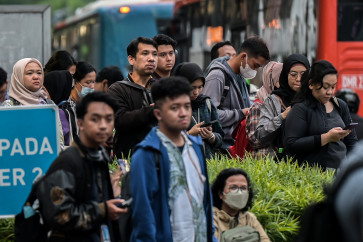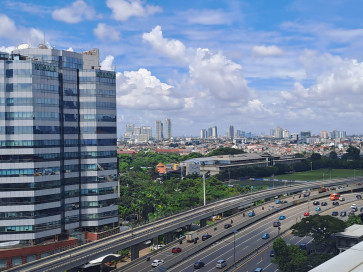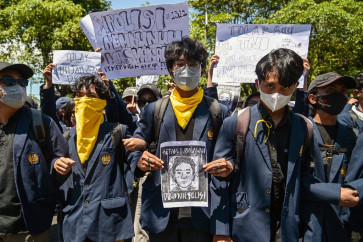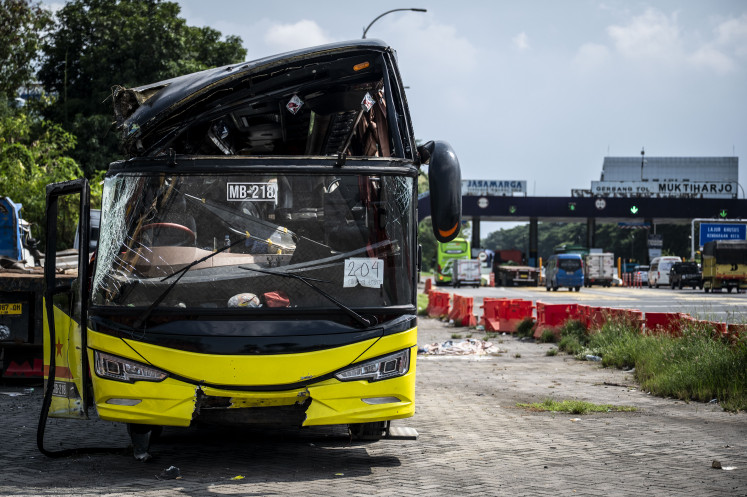Popular Reads
Top Results
Can't find what you're looking for?
View all search resultsPopular Reads
Top Results
Can't find what you're looking for?
View all search resultsEquitable reform required for the ojol industry
Behind the industry lies a clear indication of the government's failure to provide adequate and quality formal employment for its citizens.
Change text size
Gift Premium Articles
to Anyone
O
nline motorcycle taxis (ojol) have become one of the largest employment providers in Indonesia, especially in urban areas. Currently, data from the Workers Social Security Agency (BPJS Ketenagakerjaan) states that around 2 million ojol drivers are officially registered on the platforms, although the real number far exceeds this figure. The majority of workers now treat ojol as their primary job.
Research by The PRAKARSA from 2017 shows that out of 213 respondents surveyed, 60 percent consider ojol their main occupation. In terms of working hours, 26 percent of drivers work more than 48 hours per week, an amount classified as "excessive" by the ILO Convention on working hours.
Over the past decade, the number of ojol drivers has grown exponentially, along with the platforms themselves. The narrative that ojol has become the backbone of the economy continues to be echoed. However, rather than taking this at face value, the public should critically reassess the narrative. Behind the glamor of this industry lies a clear indication of the government's failure to provide adequate and quality formal employment for its citizens.
The rise of the ojol ecosystem is inseparable from the long-standing structure of Indonesia’s labor market. Early deindustrialization, marked by stagnation or even decline in the manufacturing sector's contribution to GDP since the 2000s, has pushed the growth of informal sectors, characterized by flexible hours and precarious working schemes, which gave birth to ojol industry.
The emergence of ojol is also influenced by the shrinking availability of formal jobs and a wave of layoffs. As of May, data from the Manpower Ministry shows at least 26,455 people have been laid off. The majority subsequently choose to become ojol drivers, despite the high workload and risky flexibility.
PRAKARSA’s study noted that 82.1 percent of drivers previously held permanent jobs but switched for various reasons, one of which being layoffs. Other studies also indicate that ojol is the primary fallback option for laid-off formal workers, even more so than other informal jobs. Many former formal workers also invested their severance pay or Job Loss Insurance (JKP) claims into purchasing a motorbike.
Interestingly, despite the massive layoffs, data from BPS (Statistics Indonesia) shows that Indonesia’s open unemployment rate fell to 4.76 percent in February, a year-on-year drop of 0.06 percentage points. One reason is that BPS classifies ojol drivers as "informal workers," regardless of their precarious conditions after layoffs. This categorization biases the reality of vulnerability faced by ojol drivers who often work excessive hours but are underpaid.



















